A Power Smoothing Control Strategy and Optimized Allocation of Battery Capacity Based on Hybrid Storage Energy Technology
Abstract
:1. Introduction
2. Power Smoothing Control Method Based on an Inertial Filter and PID Control Algorithm
2.1. Simplified Diagrams of the Power Smoothing Control Model
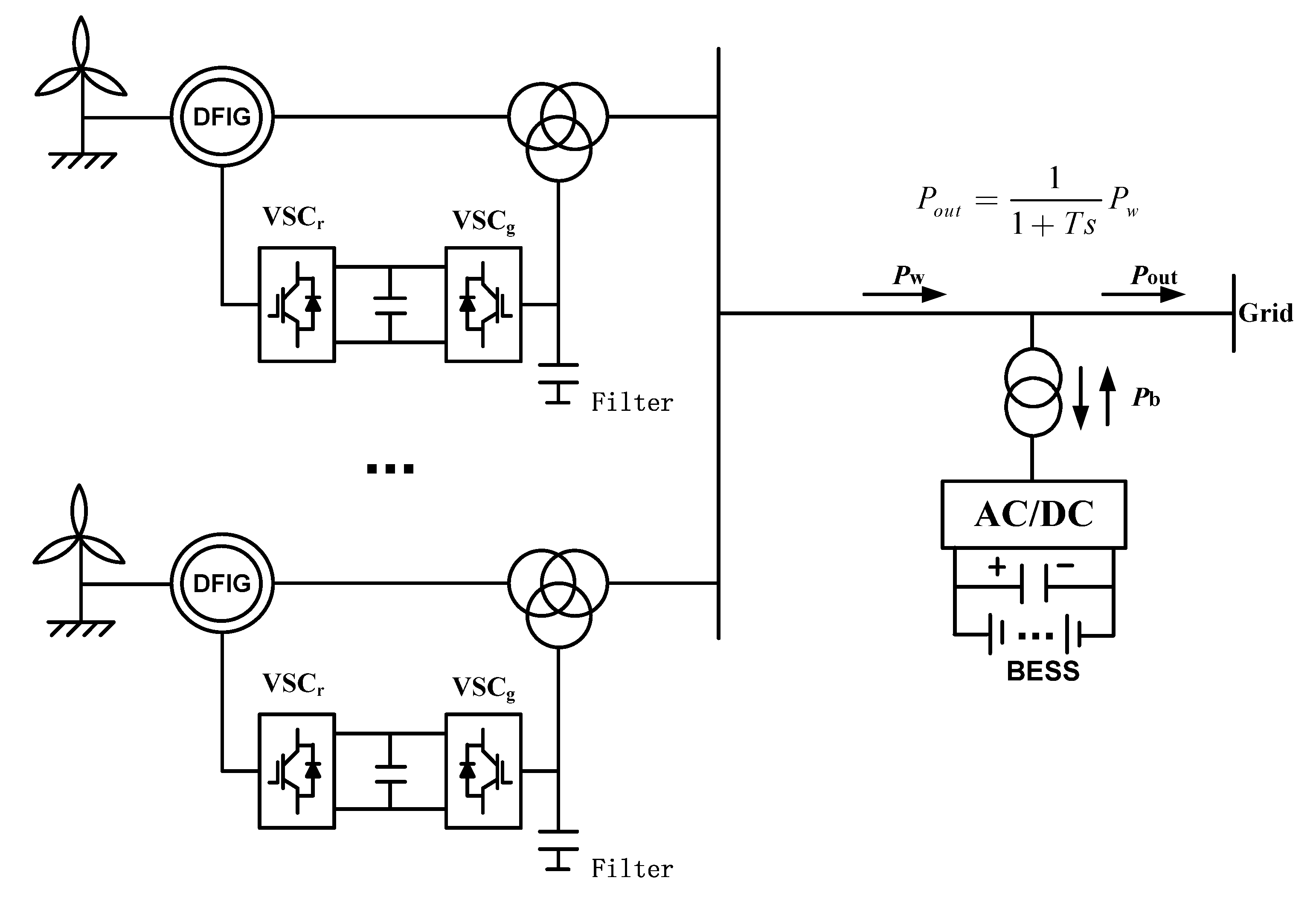

2.2. The Relationship between Inertia Filtering Time Constant and BESS Capacity

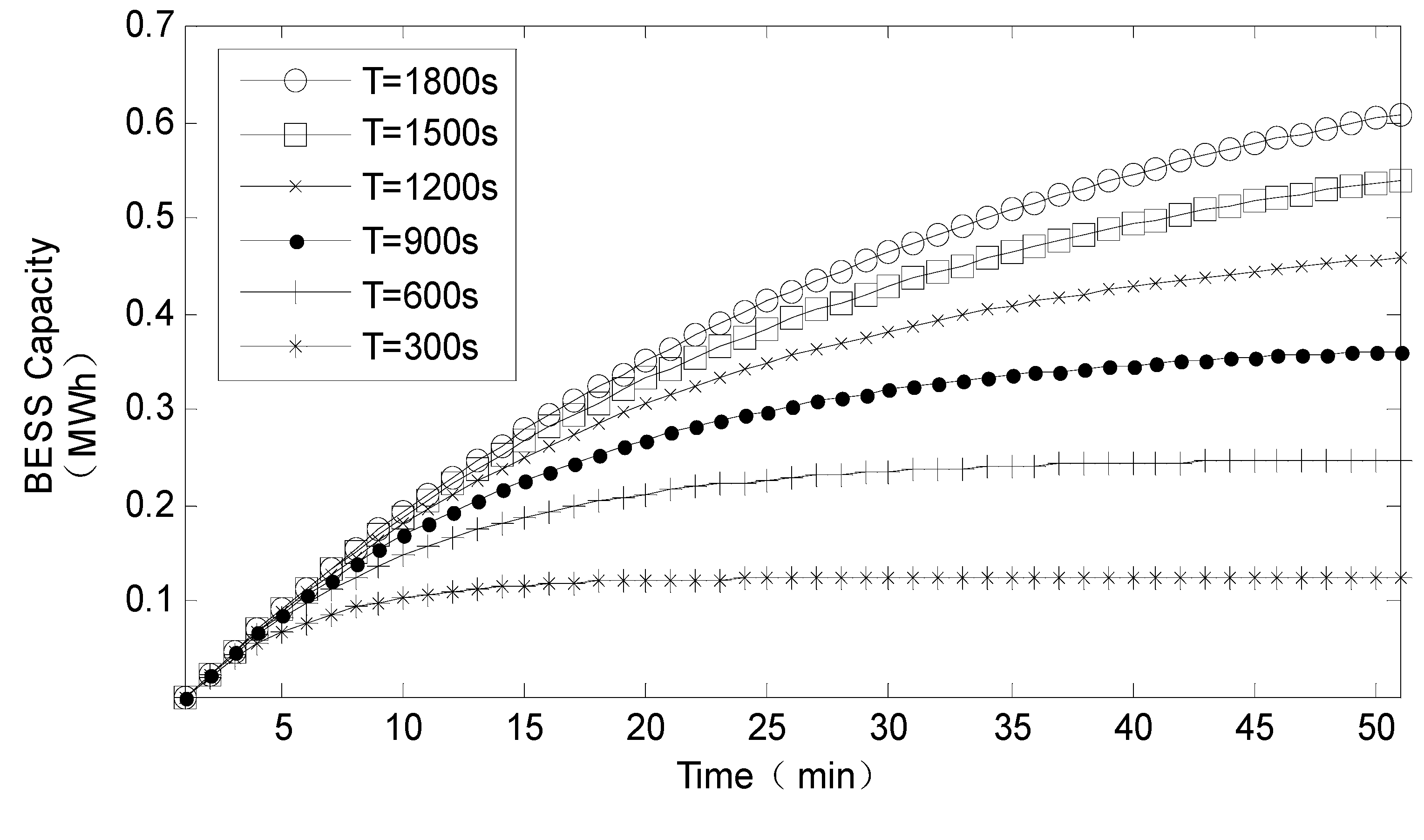
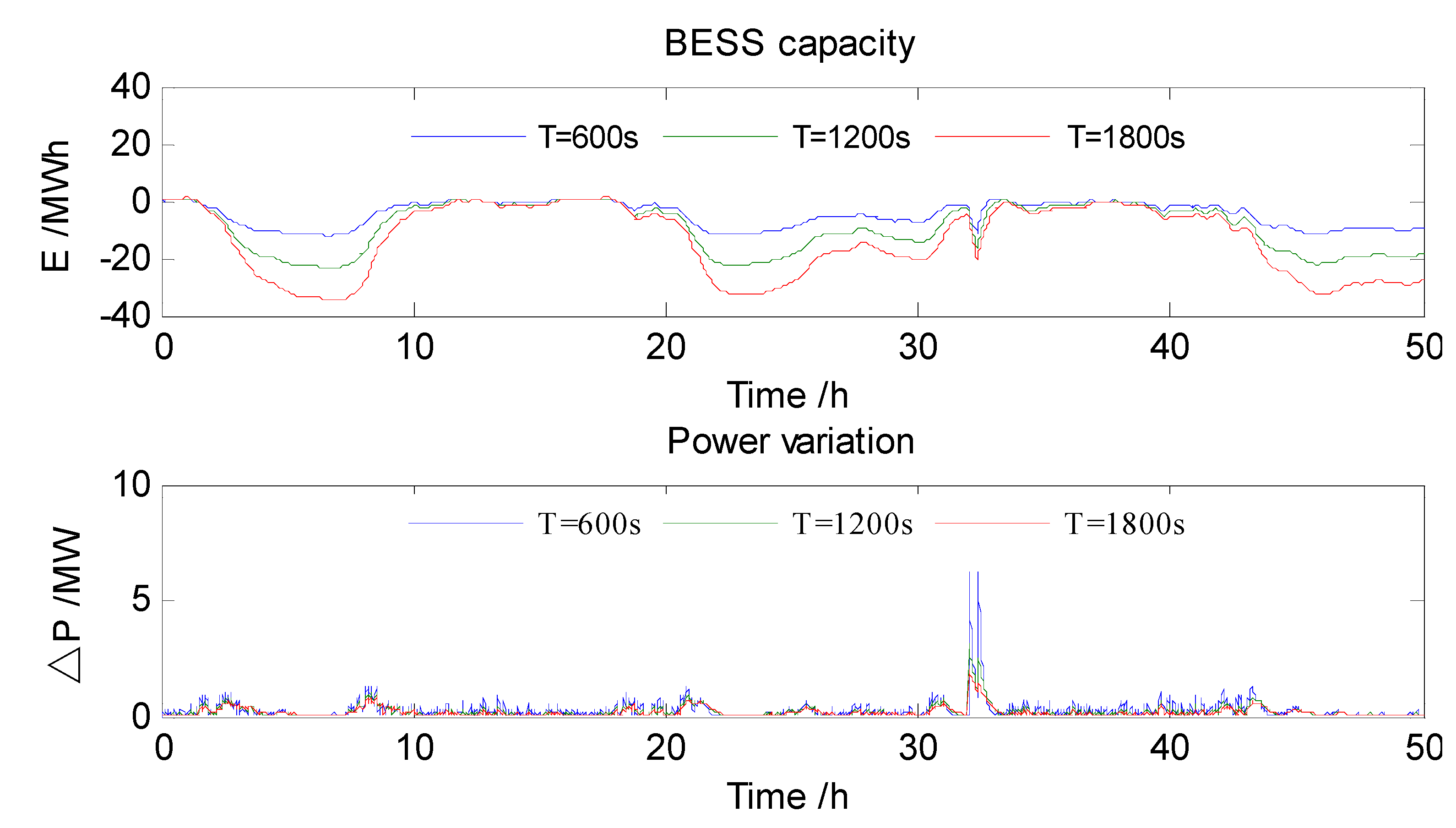
2.3. Simulation Example of Power Smoothing Based on an Inertial Filter
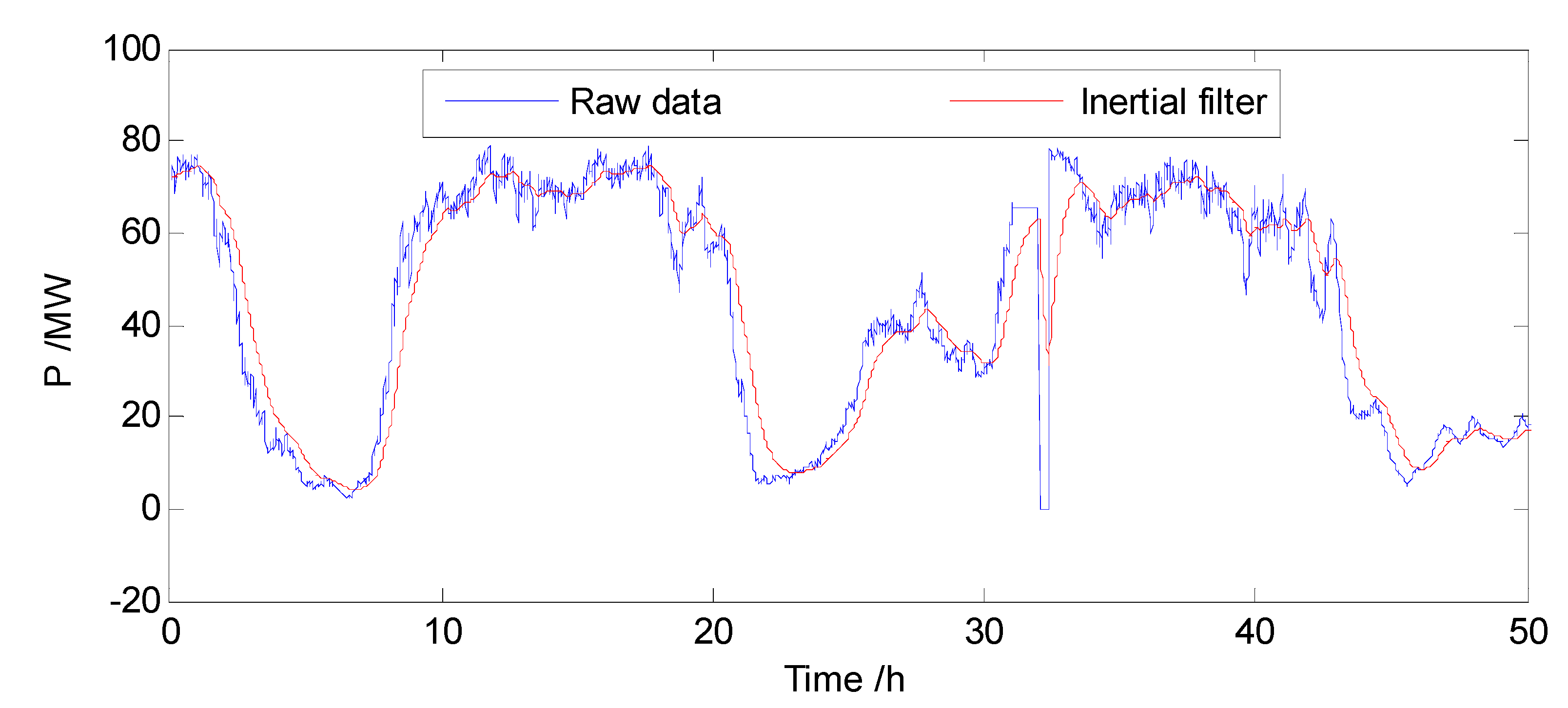
2.4. Power Smoothing Control Based on Inertial Filter and PID Control Algorithm
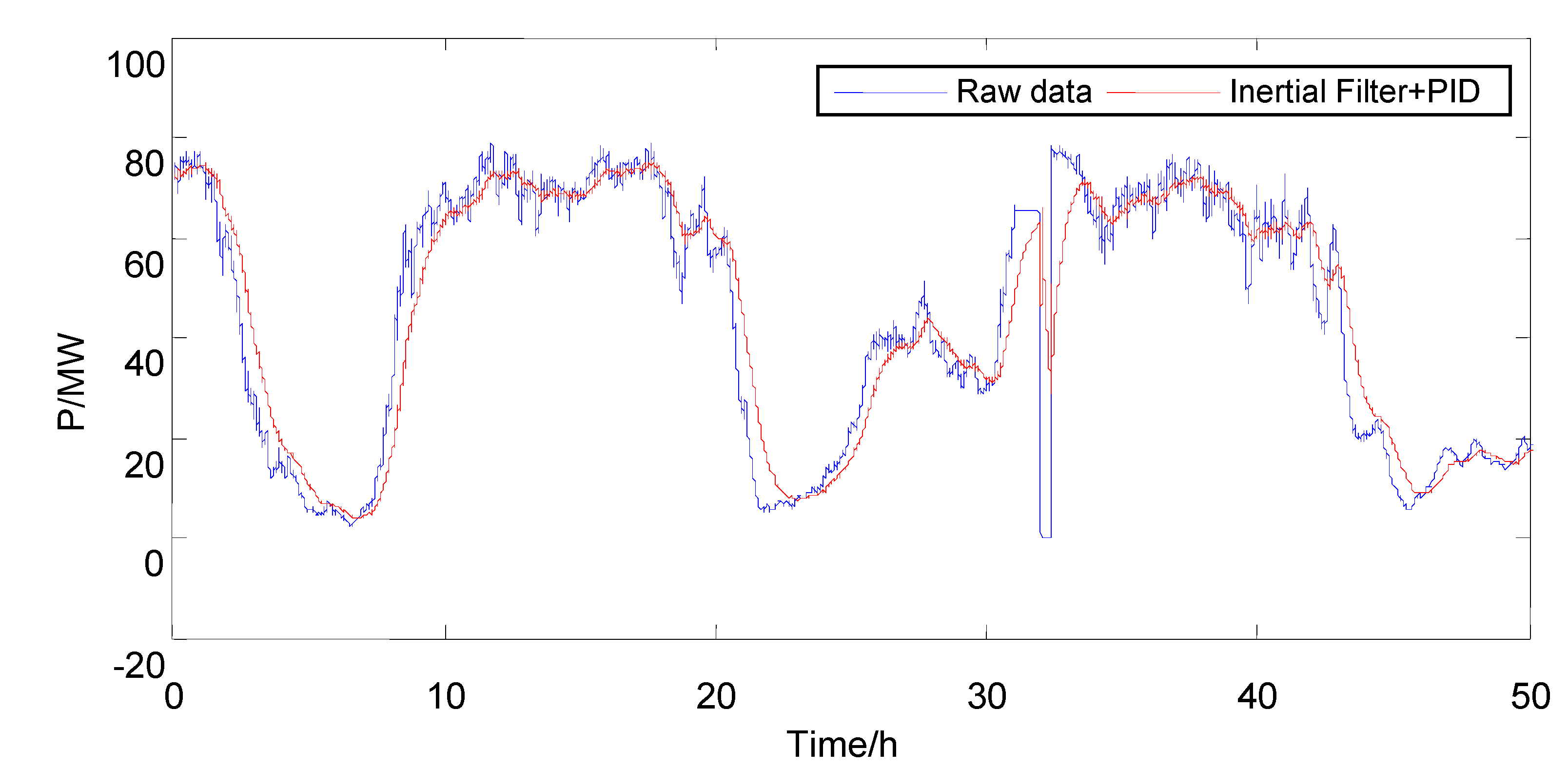
3. The Construction of a Power Smoothing Model Based on a Hybrid Energy Storage System
3.1. The Fluctuating Characteristics of Wind Power
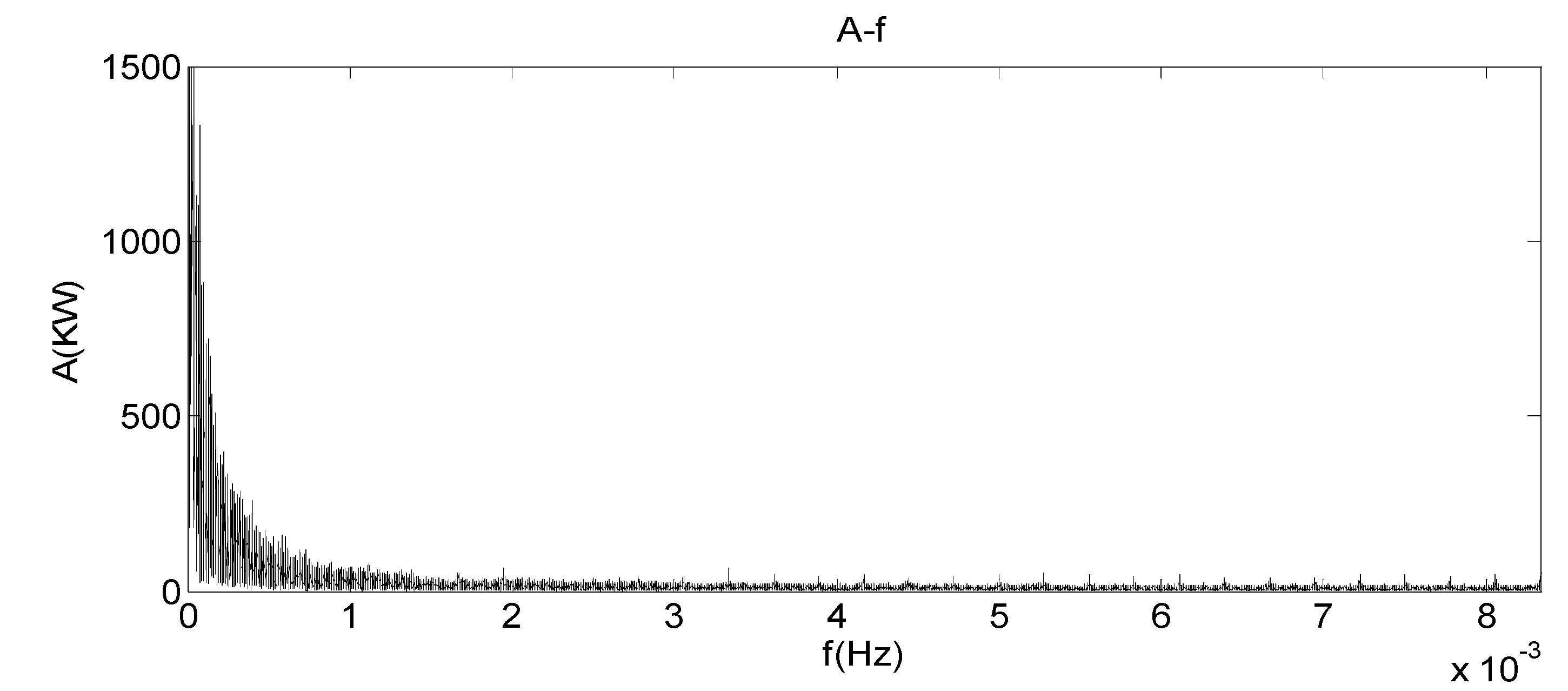
3.2. Multi-Scale Decomposition of Wind Power Signals Based on Multi-Resolution Analysis Theory
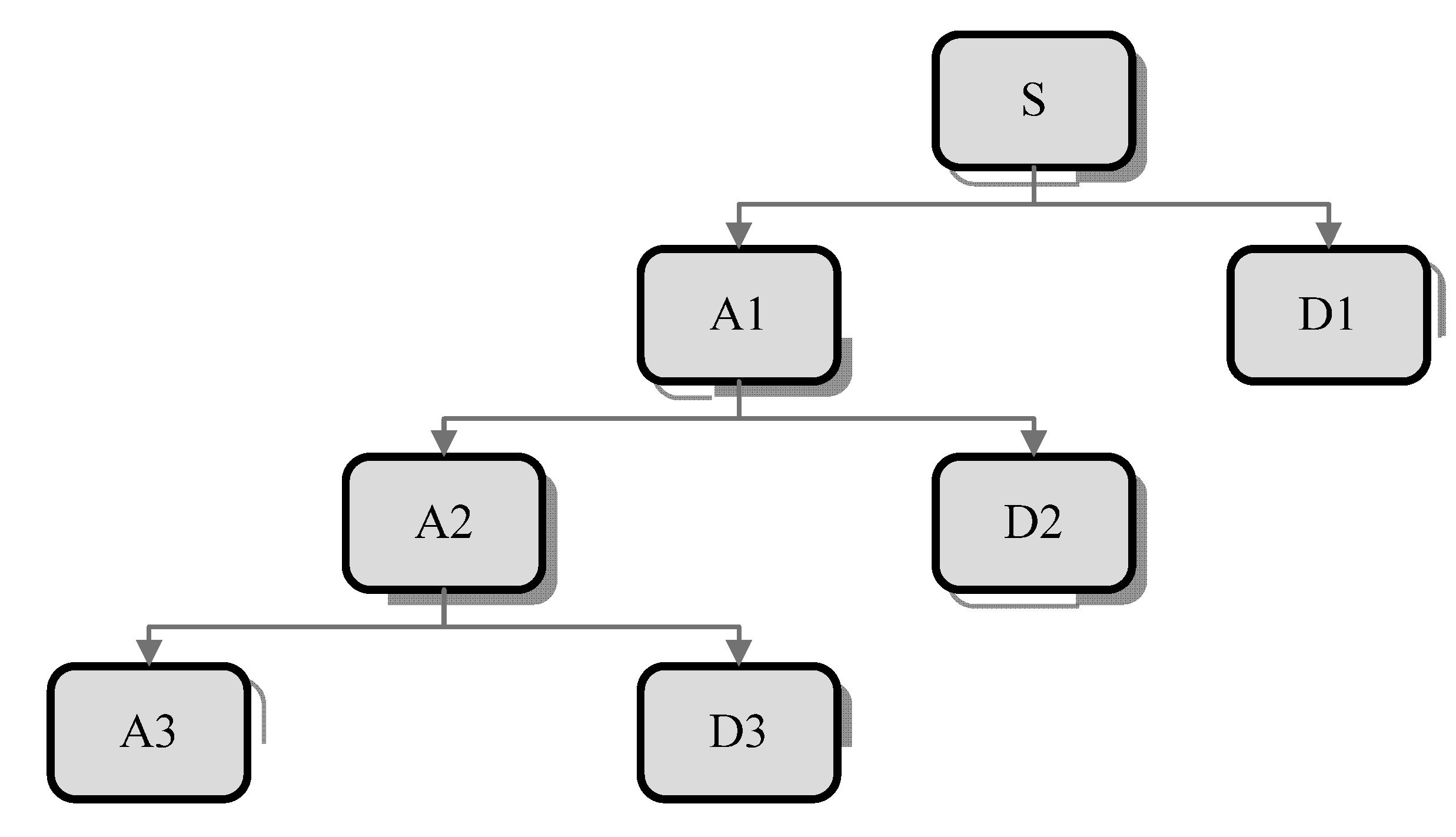
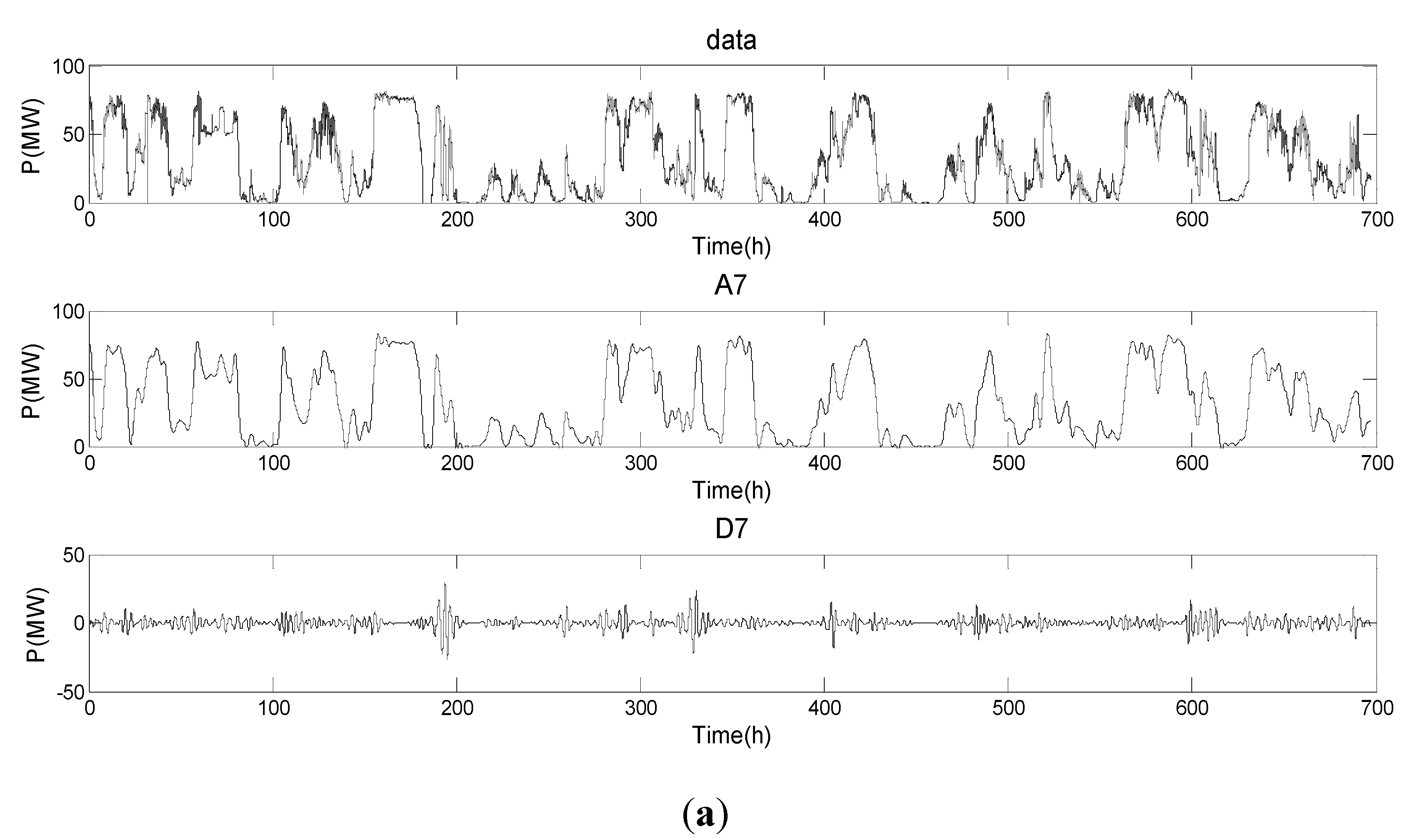
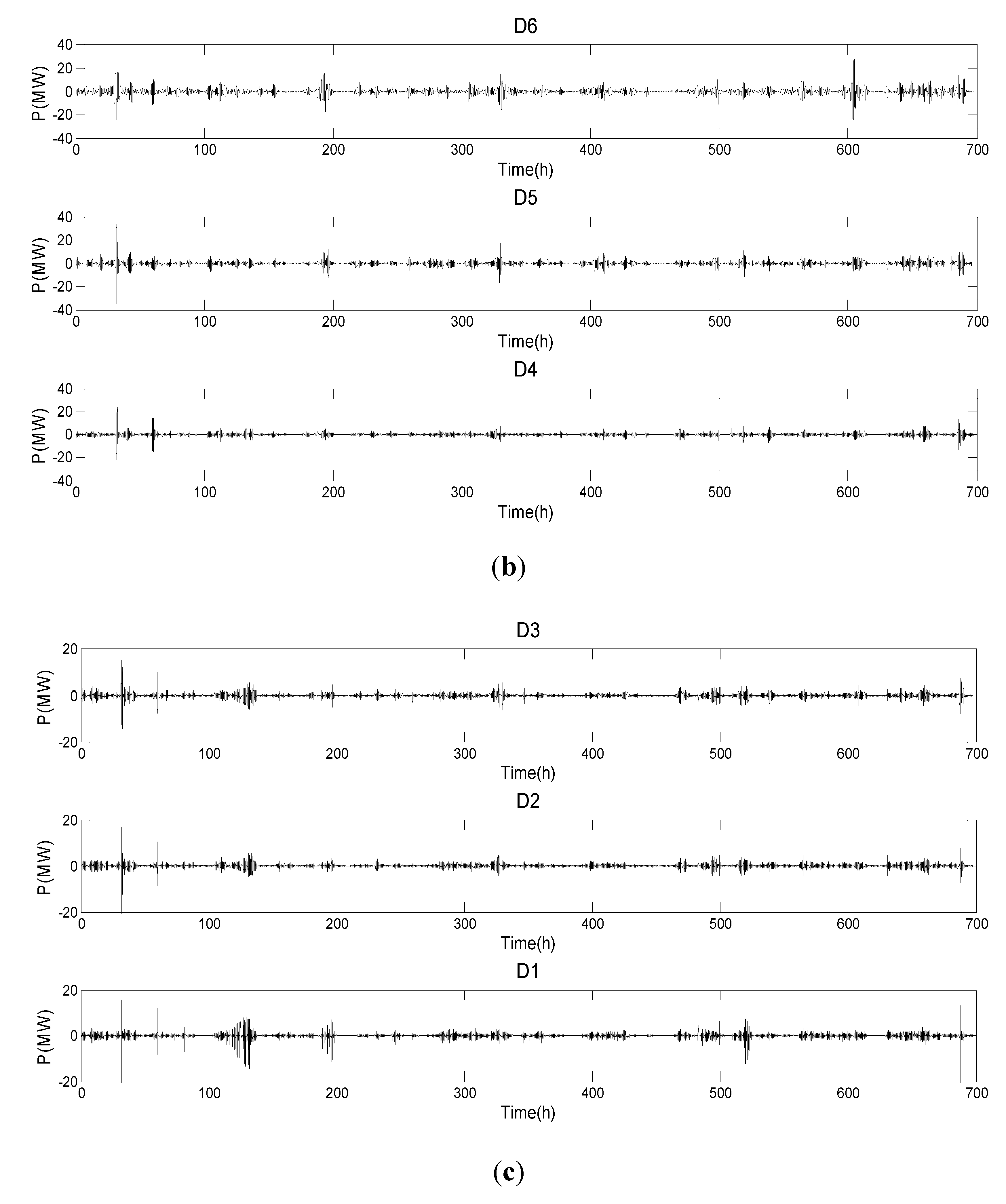
3.3. The Structure of the Power Smoothing Model Based on Hybrid Energy Storage Technology
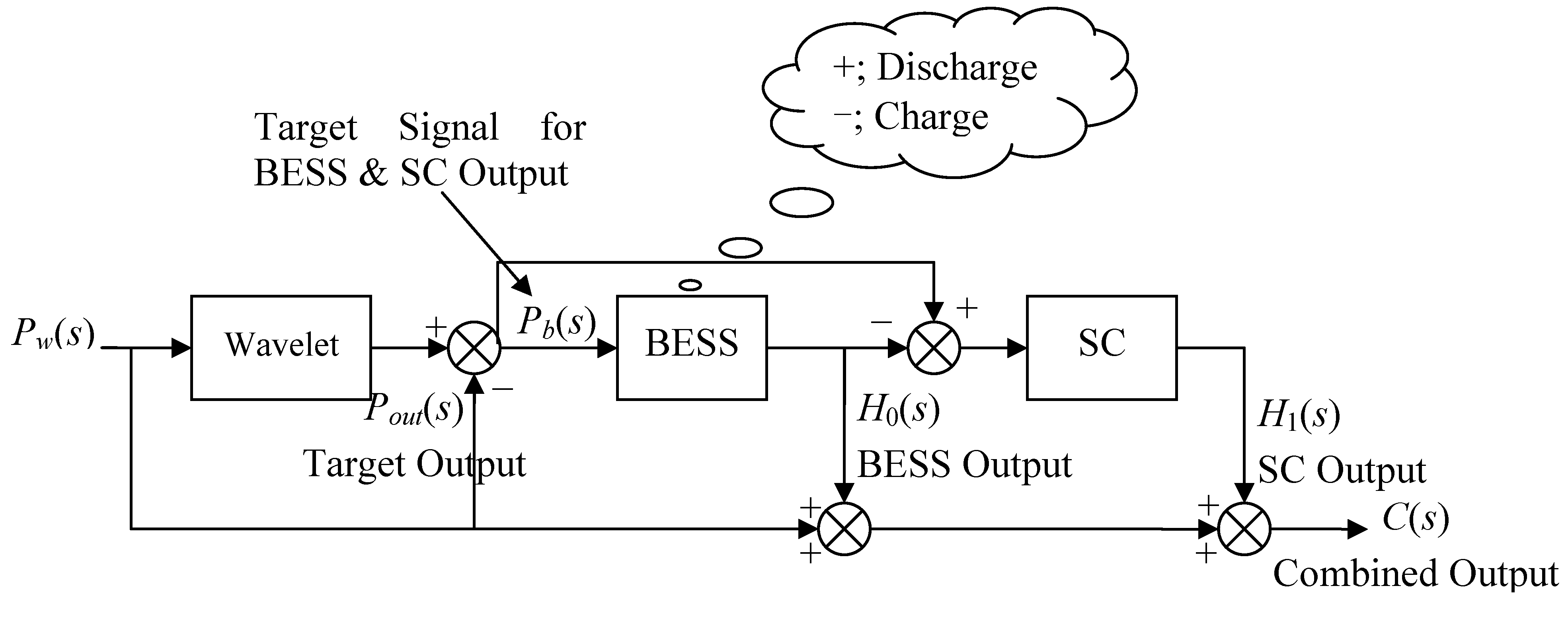
3.4. Comparison of Smoothed Power Based on Wavelet Theory and Inertial Filter
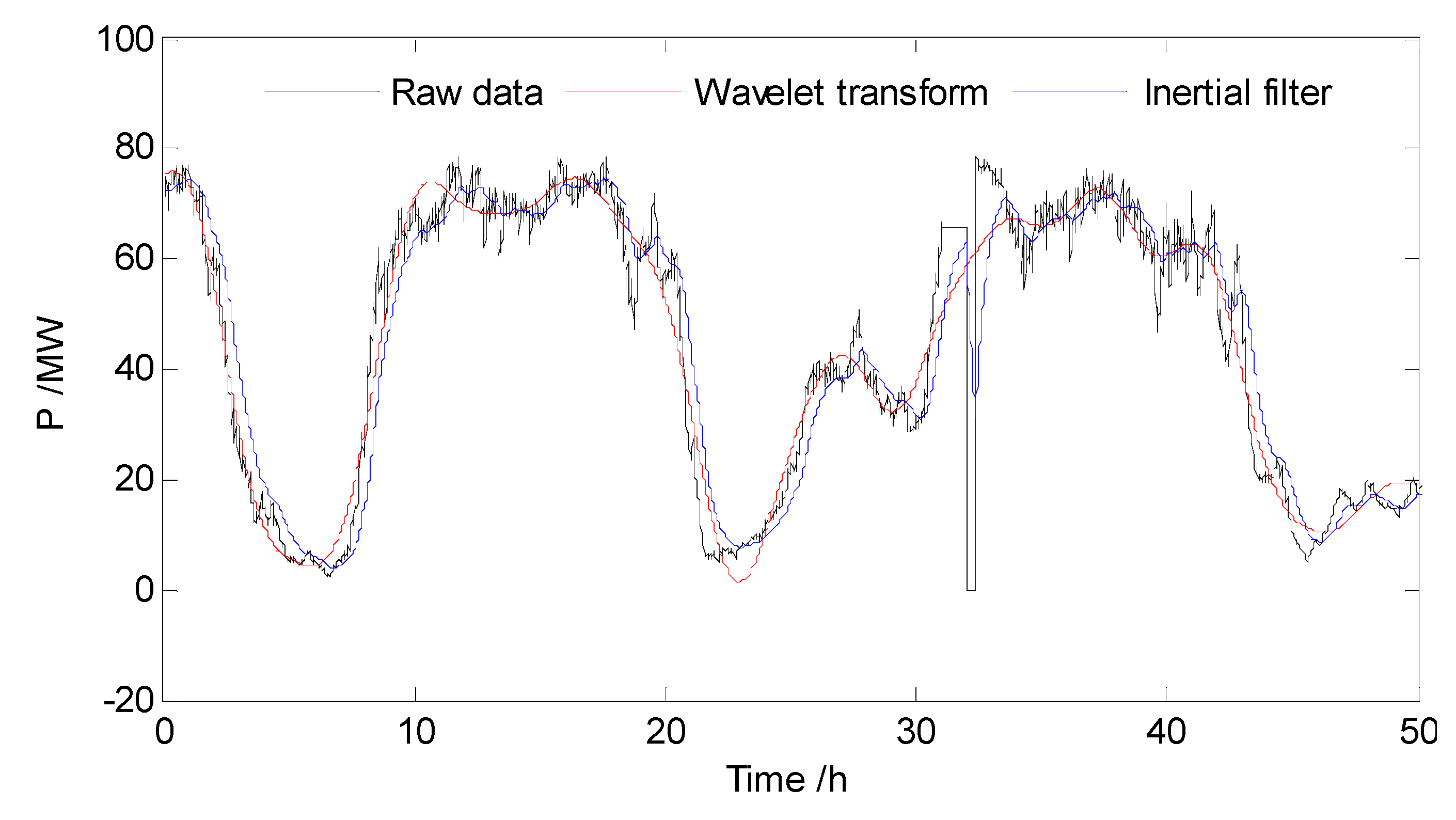

4. The Realization of Power Smoothing Control Strategy Based on Model Algorithmic Control (MAC)
4.1. Principles of Model Algorithmic Control (MAC)
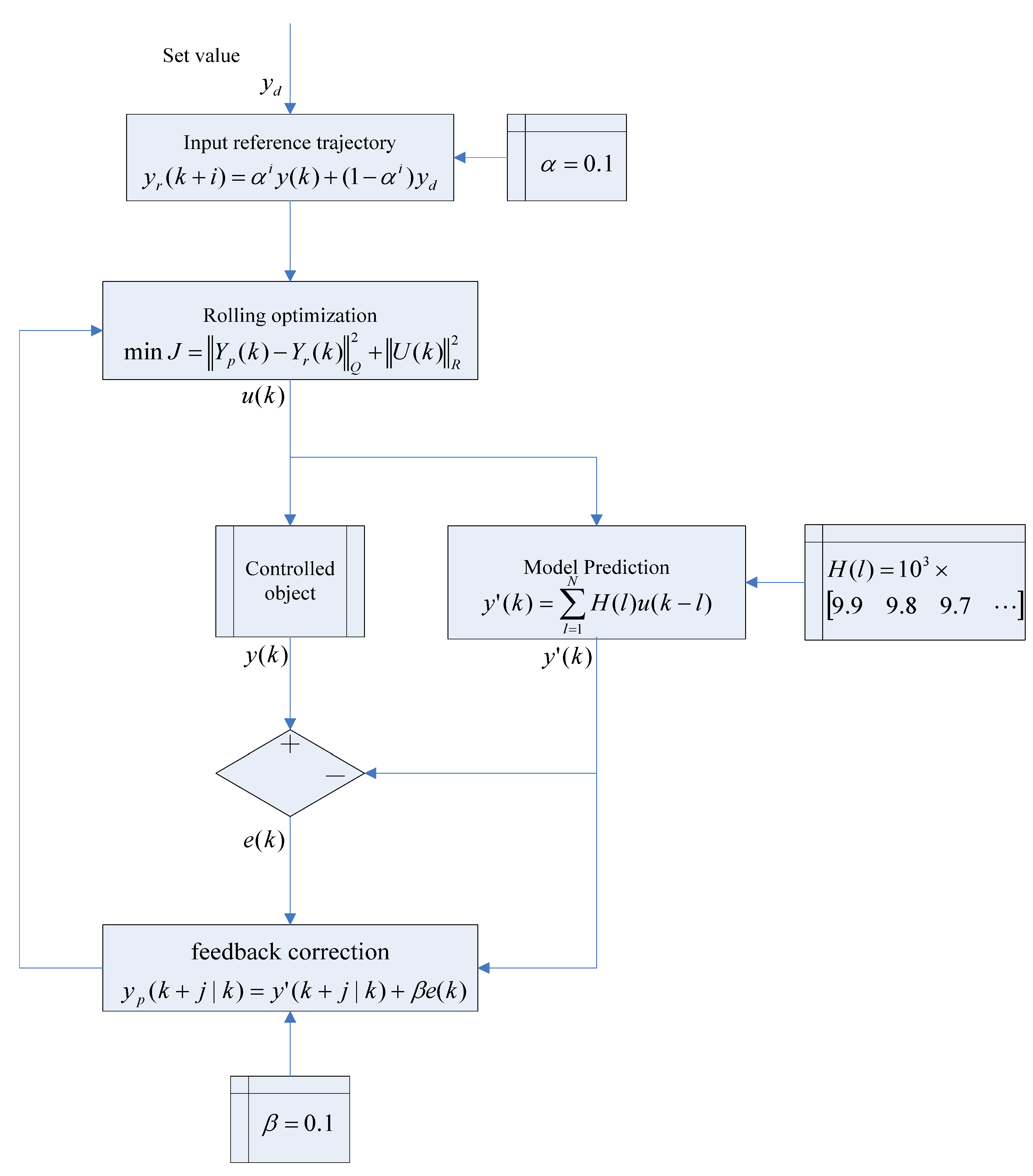
4.2. Simulation Examples of Power Smoothing Control Strategy Combining MAC Control and Wavelet Transform

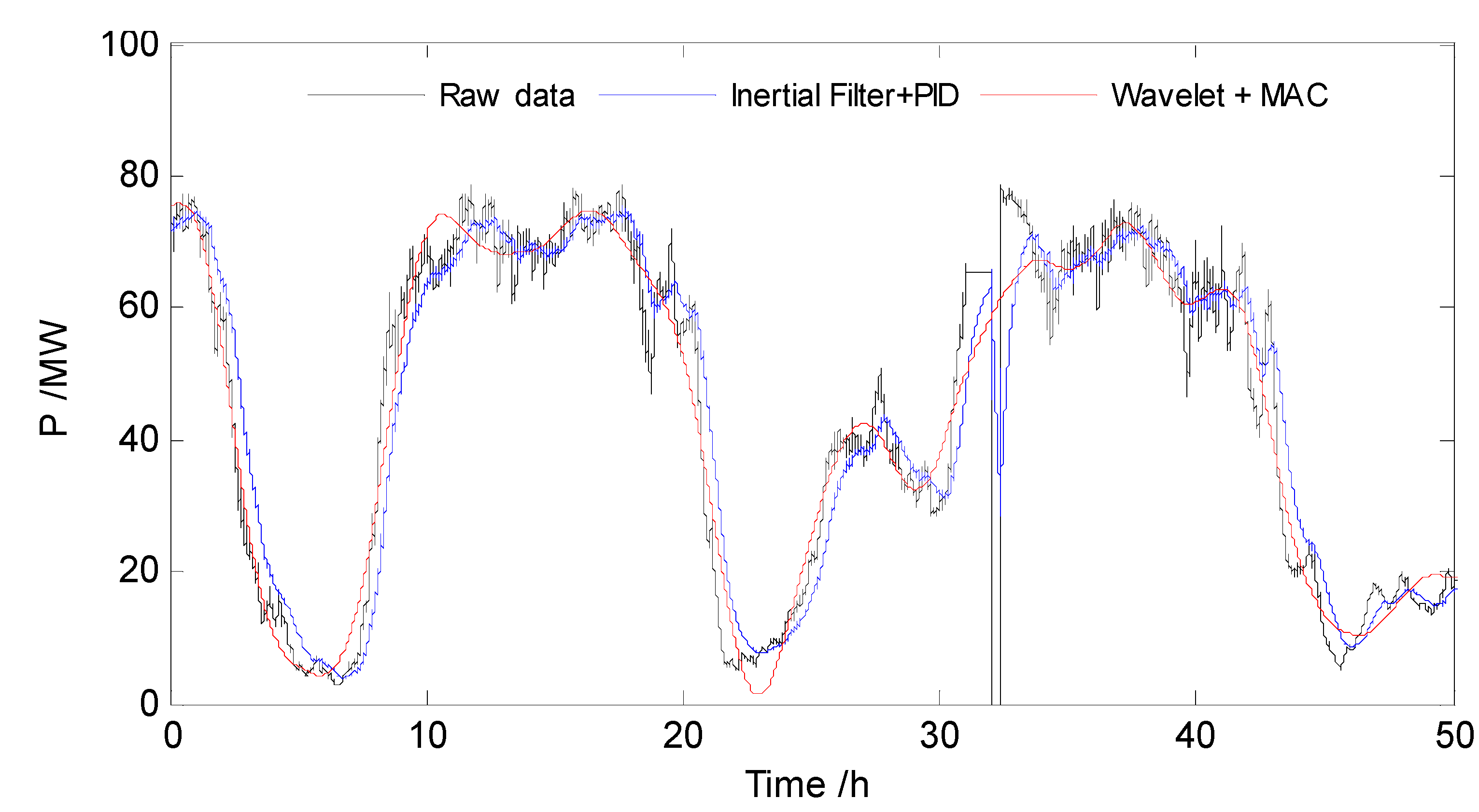
5. The Capacity Allocations of BESS Based on Wavelet Transform
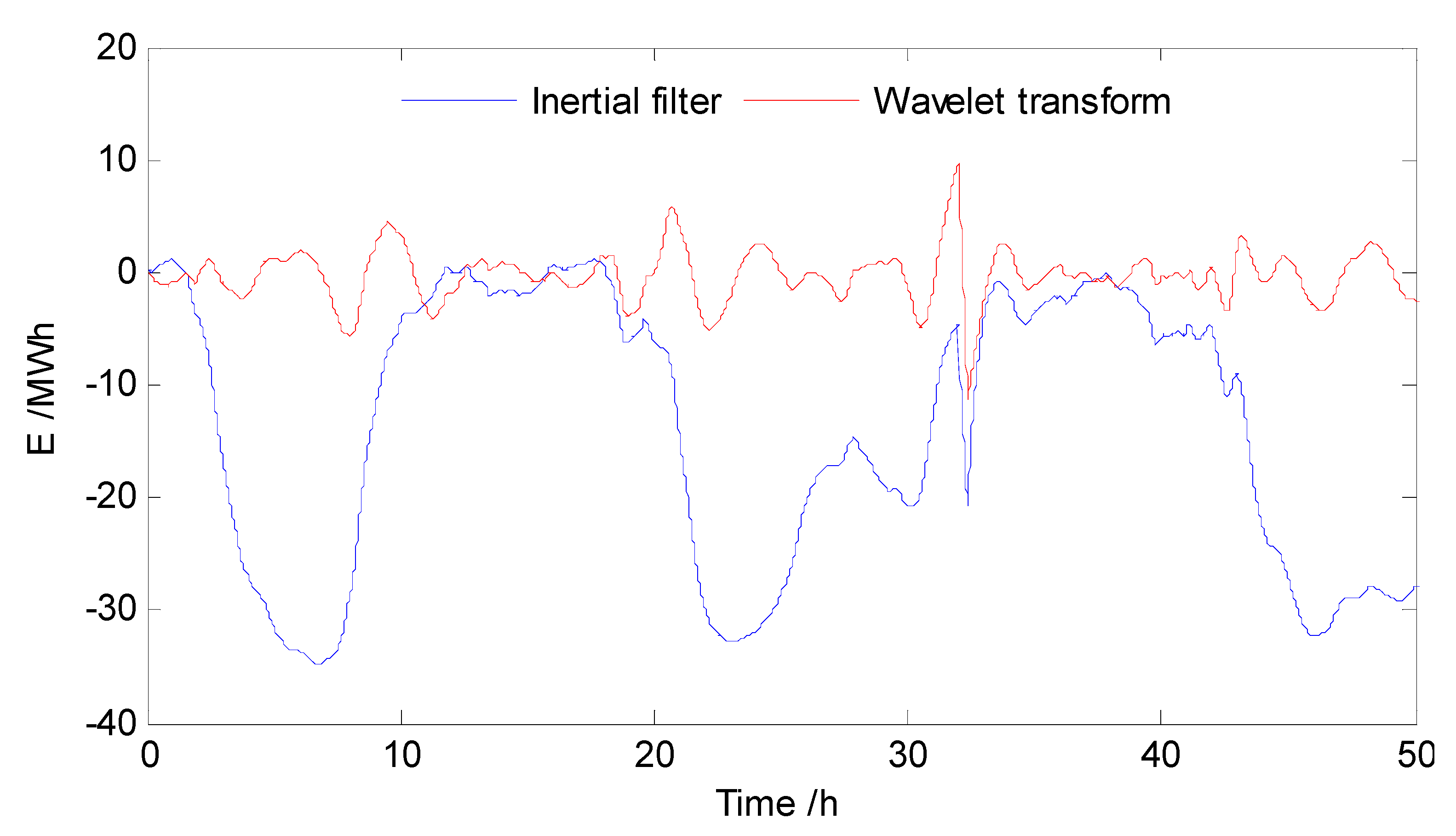
| Time | Inertial Filter | Wavelet Filter | ||||||
|---|---|---|---|---|---|---|---|---|
| T = 600 s | T = 1200 s | T = 1800 s | ||||||
| Capacity | Fluctuation rate | Capacity | Fluctuation rate | Capacity | Fluctuation rate | Capacity | Fluctuation rate | |
| 10 min | 0.1175 | 0.22% | 0.1324 | 0.12% | 0.1381 | 0.08% | 0.3605 | 0.05% |
| 30 min | 0.4402 | 0.36% | 0.5619 | 0.18% | 0.6258 | 0.13% | 0.34 | 0.05% |
| 1 h | 0.5751 | 0.36% | 0.9073 | 0.18% | 1.1406 | 0.13% | 1.2406 | 0.16% |
| 6 h | 12.3531 | 1.07% | 23.6910 | 0.8% | 34.7048 | 0.68% | 4.2565 | 0.47% |
| 12 h | 12.7734 | 1.36% | 24.4047 | 1.05% | 35.8569 | 0.89% | 10.4147 | 0.47% |
| 24 h | 12.7734 | 1.36% | 24.4047 | 1.05% | 35.8569 | 0.89% | 11.5506 | 0.47% |
| 7 day | 12.0890 | 6.27% | 27.3457 | 3.17% | 40.5777 | 2.07% | 21.0206 | 0.57% |
| 14 day | 14.0891 | 6.27% | 27.3483 | 3.17% | 40.5902 | 2.07% | 35.2689 | 0.58% |
| 30 day | 14.4780 | 6.27% | 28.1508 | 3.17% | 41.6251 | 2.07% | 35.2689 | 0.58% |
| Month | Inertial Filter | Wavelet Filter | ||||||
|---|---|---|---|---|---|---|---|---|
| T = 600 s | T = 1200 s | T = 1800 s | ||||||
| Capacity | Fluctuation rate | Capacity | Fluctuation rate | Capacity | Fluctuation rate | Capacity | Fluctuation rate | |
| 1 | 13.5525 | 5.69% | 26.3605 | 3.07% | 39.2466 | 2.11% | 32.0343 | 0.68% |
| 2 | 12.0408 | 4.91% | 23.3865 | 2.78% | 34.9313 | 1.93% | 25.9837 | 0.58% |
| 3 | 11.5335 | 6.01% | 22.4609 | 3.07% | 33.3663 | 2.04% | 26.9449 | 0.57% |
| 4 | 14.4780 | 6.27% | 28.1508 | 3.17% | 41.6251 | 2.07% | 35.2689 | 0.58% |
| 5 | 14.4155 | 7.02% | 28.1101 | 3.74% | 41.8126 | 2.55% | 41.9205 | 0.75% |
| 6 | 13.4053 | 3.12% | 25.9378 | 1.71% | 38.3804 | 1.28% | 26.3218 | 0.48% |
| 7 | 13.4397 | 5.29% | 25.9693 | 2.53% | 38.2902 | 1.81% | 26.8048 | 0.46% |
| 8 | 11.78881 | 3.22% | 22.4104 | 1.57% | 32.3637 | 1.19% | 19.6621 | 0.39% |
| 9 | 14.0477 | 2.98% | 27.2093 | 1.66% | 40.0676 | 1.21% | 23.4834 | 0.54% |
| 10 | 14.6336 | 3.61% | 28.3331 | 2.20% | 41.7807 | 1.56% | 26.6868 | 0.54% |
| 11 | 15.2521 | 5.63% | 29.4935 | 3.12% | 43.7327 | 2.14% | 29.0139 | 0.75% |
| 12 | 15.0642 | 6.47% | 29.3345 | 3.36% | 43.5619 | 2.29% | 38.0849 | 0.79% |
6. Conclusions
Acknowledgments
References
- Sun, T.; Wang, W.S.; Dai, H.Z. Voltage fluctuation and flicker caused by wind power generation. Power Syst. Technol. 2003, 27, 62–66. [Google Scholar]
- Chi, Y.N.; Wang, W.S.; Dai, H.Z. The Study of Grid Wind Farms Transient Voltage Stability Based on Doubly-Fed Induction Generator. J. Chin. Electr. Eng. 2007, 27, 25–31. [Google Scholar]
- Chi, Y.N.; Wang, W.S.; Liu, Y.H. Impact of large scale wind farm integration on power system transient stability. Autom. Electr. Power Syst. 2006, 30, 10–14. [Google Scholar]
- Bialasiewicz, J.T.; Muljadi, E. The Wind Farm Aggregation Impact on Power Quality. In Proceedings of the 32nd Annual Conference of IEEE Industrial Electronics, Paris, France, 2006; pp. 4195–4200.
- Li, X.; Hu, C.S.; Liu, C.J.; Xu, D.H. Modeling and Control of SCES based on Wind Farms Power Regulation System. Autom. Electr. Power Syst. 2009, 9, 86–90. [Google Scholar]
- Paatero, J.V.; Lund, P.D. Effect of energy storage on variations in wind power. Wind Energy 2005, 8, 421–441. [Google Scholar] [CrossRef]
- Li, Q.; Yuan, Y.; Tan, D.Z. Application progress of Energy storage technology in wind power grid. J. He Hai Univ. 2010, 38, 115–112. [Google Scholar]
- Pan, W.X.; Fan, Y.W.; Ju, L.; Gao, A.L. Optimal selection of pumped storage system capacity in Wind farms. Electr. Technol. 2008, 3, 120–124. [Google Scholar]
- Tan, J.; Li, G.J.; Tang, Z.W. Power control and benefit analysis based on compressed air energy storage in wind farms. Autom. Electr. Power Syst. 2011, 8, 33–37. [Google Scholar]
- Ruan, J.P.; Zhang, J.C.; Wang, J.H. Study of flywheel storage system to improve the stability of grid wind farms. Power Sci. Eng. 2008, 3, 5–8. [Google Scholar]
- Tomkoi, A.; Takahashi, R.; Murata, T. Smoothing control of wind power generator output by superconducting magnetic energy storage system. In Proceedings of International Conference on Electrical Machines and Systems, Seoul, Korea, October 2007; pp. 302–307.
- Jia, H.X.; Zhang, Y.; Wang, Y.F. Application of Energy storage technology in wind power systems. Renew. Energy 2009, 27, 10–15. [Google Scholar]
- Price, A. Technologies for energy storage-present and future: Flow batteries. In Proceedings of Power Engineering Society Summer Meeting, Washington, DC, USA, July 2000; pp. 1541–1545.
- Suvire, G.O.; Mercado, P.E.; Ontiveros, L.J. Comparative Analysis of Energy Storage Technologies to Compensate Wind Power Short-Term Fluctuations. In Proceedings of IEEE PES Power Systems Conference and Exposition, Sao Paulo, Brazil, November 2010; pp. 522–528.
- Yoshimoto, K.; Nanahara, T.; Koshimizu, G. New control method for regulating state-of-charge of a battery in hybrid wind power/battery energy storage system. In Proceedings of the 2006 IEEE PES Power Systems Conference and Exposition (PSCE '06), Atlanta, GA, USA, November 2006; pp. 1244–1251.
- Sercan, T.; Mesut, E.B.; Subhashish, B.; Alex, H. Validation of battery energy storage control for wind farm dispatching. In Proceedings of the 2010 IEEE Power and Energy Society General Meeting, Minneapolis, MN, USA, July 2010; pp. 1–7.
- Liu, J.T.; Zhang, J.C. Control method of energy storage system combining super capacitor with battery. Power Sci. Eng. 2011, 1, 1–4. [Google Scholar]
- Yu, P.; Zhou, W.; Sun, H.; Guo, L.; Sun, F.S.; Sui, Y.Z. Hybrid energy storage system and its control system design for smoothing wind power. Chin. Electr. Eng. 2011, 31, 127–133. [Google Scholar]
- Zhou, Y.; Cheng, J. The Wavelet Transform and its application. Physics 2008, 37(1), 24–32. [Google Scholar]
- Han, X.; Cao, H.; Li, Y.; Xiao, Y.; Tang, X. Short-time wind speed prediction based on wavelet and LS-SVM. Acta Energiae Solaris Sinica 2011, 32(17), 1538–1542. [Google Scholar]
- Wang, L.; Dong, L.; Liao, X.; Gao, Y. Short-term power prediction of a wind farm based on wavelet analysis. Proc. CSEE 2009, 29(28), 30–33. [Google Scholar]
- Qian, J.; Zhao, J.; Xu, Z. Prediction Control; Chemical Industry Press: Beijing, China, 2007. [Google Scholar]
- Xing, L.; Datta, A. Adaptive model algorithmic control. Am. Control Conf. 2001, 6, 4155–4160. [Google Scholar]
- Oh, T.K.; Mao, Z.Z. Improved model algorithmic control scheme for thyristor-controlled series capacitor. In Proceedings of the Power Engineering Society Summer Meeting, Vancouver, Canada, July 2001; pp. 1560–1565.
© 2012 by the authors; licensee MDPI, Basel, Switzerland. This article is an open access article distributed under the terms and conditions of the Creative Commons Attribution license (http://creativecommons.org/licenses/by/3.0/).
Share and Cite
Han, X.; Chen, F.; Cui, X.; Li, Y.; Li, X. A Power Smoothing Control Strategy and Optimized Allocation of Battery Capacity Based on Hybrid Storage Energy Technology. Energies 2012, 5, 1593-1612. https://doi.org/10.3390/en5051593
Han X, Chen F, Cui X, Li Y, Li X. A Power Smoothing Control Strategy and Optimized Allocation of Battery Capacity Based on Hybrid Storage Energy Technology. Energies. 2012; 5(5):1593-1612. https://doi.org/10.3390/en5051593
Chicago/Turabian StyleHan, Xiaojuan, Fang Chen, Xiwang Cui, Yong Li, and Xiangjun Li. 2012. "A Power Smoothing Control Strategy and Optimized Allocation of Battery Capacity Based on Hybrid Storage Energy Technology" Energies 5, no. 5: 1593-1612. https://doi.org/10.3390/en5051593





